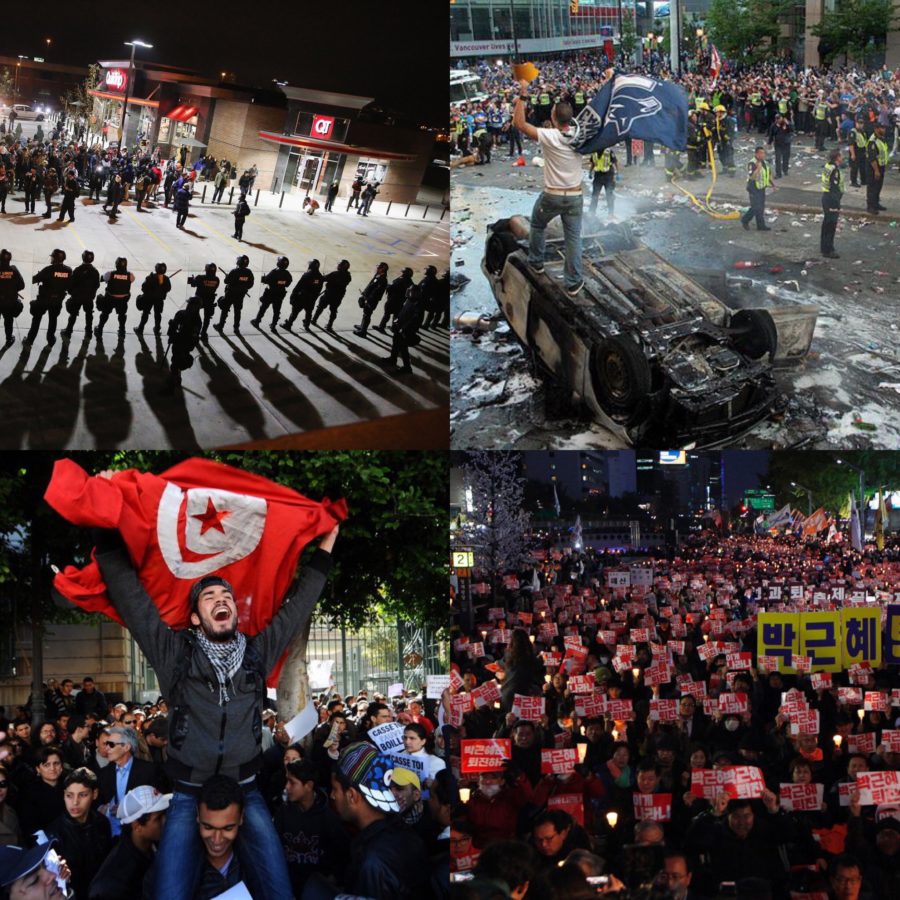
The year 2011 was the year of social media, mass gatherings, and movements, or as we now know it, The Arab Spring.
It’s believed to have all started in Tunisia when a 26-year-old man, who was trying to sell fruits and vegetables in order to support his widowed mother and six siblings, had his cart confiscated and was slapped by a policewoman. Humiliated and full of rage, he set himself on fire in front of a government building. This wasn’t the first time an instance like this had happened, but when it was captured by cellphone cameras and shared on the Internet, everything changed. This act of injustice, which led to the President of Tunisia fleeing the country a month later, awakened a sleeping giant across the Middle East. Just consider what else happened that year:
- January 14, 2011: Government overthrown in Tunisia
- February 11, 2011: Government overthrown in Egypt; President Mubarak resigns facing charges of killing unarmed protestors
- February 15, 2011: Anti-government protests begin in Libya, and on October 20, Gaddafi is killed.
And the list goes on and on with Syria, Yemen, Algeria, Iraq, Jordan, Kuwait, Morocco, and Oman.
Mass gatherings, riots, and movements are nothing new.
Just consider when over 200,000 people gathered on the steps of the Lincoln Memorial to hear Martin Luther King Jr.’s speech in 1963. Or what about the L.A. Race Riots of 1992 and the Ferguson, Missouri, riots of 2014? Then there are the riots that I am personally most embarrassed of—not because I was there, but because this was my home city—when, in 2011, the Vancouver Canucks lost the Stanley Cup 4-0 against the Boston Bruins.
Fans went insane. Police cars were set on fire, shops were looted, glass was broken, and cars were overturned. It was chaos.
And at the end of 2016, let’s not forget the massive movement where millions came out protesting and calling for the impeachment of Park Geun-Hye, then President of South Korea.
We remember moments like these because people gathered. And when they gathered, they did something together they wouldn’t have been able to do by themselves. They saw both the dificulties and possibilities so clearly that they were able to visualize a different reality. This vision for a golden tomorrow has fueled movements in the past and is what will spark a church multiplication movement today.
A Golden Tomorrow: Planting 1,000 Churches
Subtract your age from the number 80. Now take that number, and add it to this year’s number. What year do you get? 2050? 2070? 2090?
What if I told you that it’s possible to plant 1,000 churches before you get to that year? 1,000 churches in your lifetime? Would you believe me?
In fact, before you move any further, take a moment and try reverse engineering what you would need to do in order to plant 1,000 churches in your lifetime.
It’s happened before, and it can happen again.
We live in exciting times where we have the capability of reaching multitudes of people—more than any other generation before us. The world has grown smaller, and our capacity for knowledge transfer and multiplication has dramatically expanded.
Historically speaking, 1,000 churches have been planted in the average lifespan of an individual in China and Korea, as well as in the West with the Calvary Chapel, Vineyard, and Hope Chapel movements. Although this figure seems overwhelming, recent history has proven that when God is in the mix and the church is stirred to action, anything is possible!
It is our prayer that this concise book, 1,000 Churches: How Past Movements Did It—And How Your Church Can, Too, will increase your optimism and vision for church planting possibilities in a way that becomes catalytic and contagious for the kingdom’s sake.
In chapter one of this book that Ed Stetzer and I wrote for NewChurches.com, we will take a closer look at each of these examples given as we explore movements and what’s taken place in recent history. This chapter’s aim is to inform so that reform and movement may be catalyzed. In chapter two, we’ll explore why there are no church planting movements currently in the West. Chapter three is where we’ll examine the characteristics of movements and their barriers with a view to greater impact and missional impetus. We’ll then conclude with an outline of the systems and principles required to plant 1,000 churches in your lifetime.
Let’s stop longing for the past, when things were better and when churches grew and expanded en masse in the West.
Instead, let’s look forward and pray that God would do it again in a fresh way. Let’s lift our eyes above what we see and allow our vision of the glory of God to shape our present realities and direct our future paths.
Download this book for free here, or purchase hard copies here.